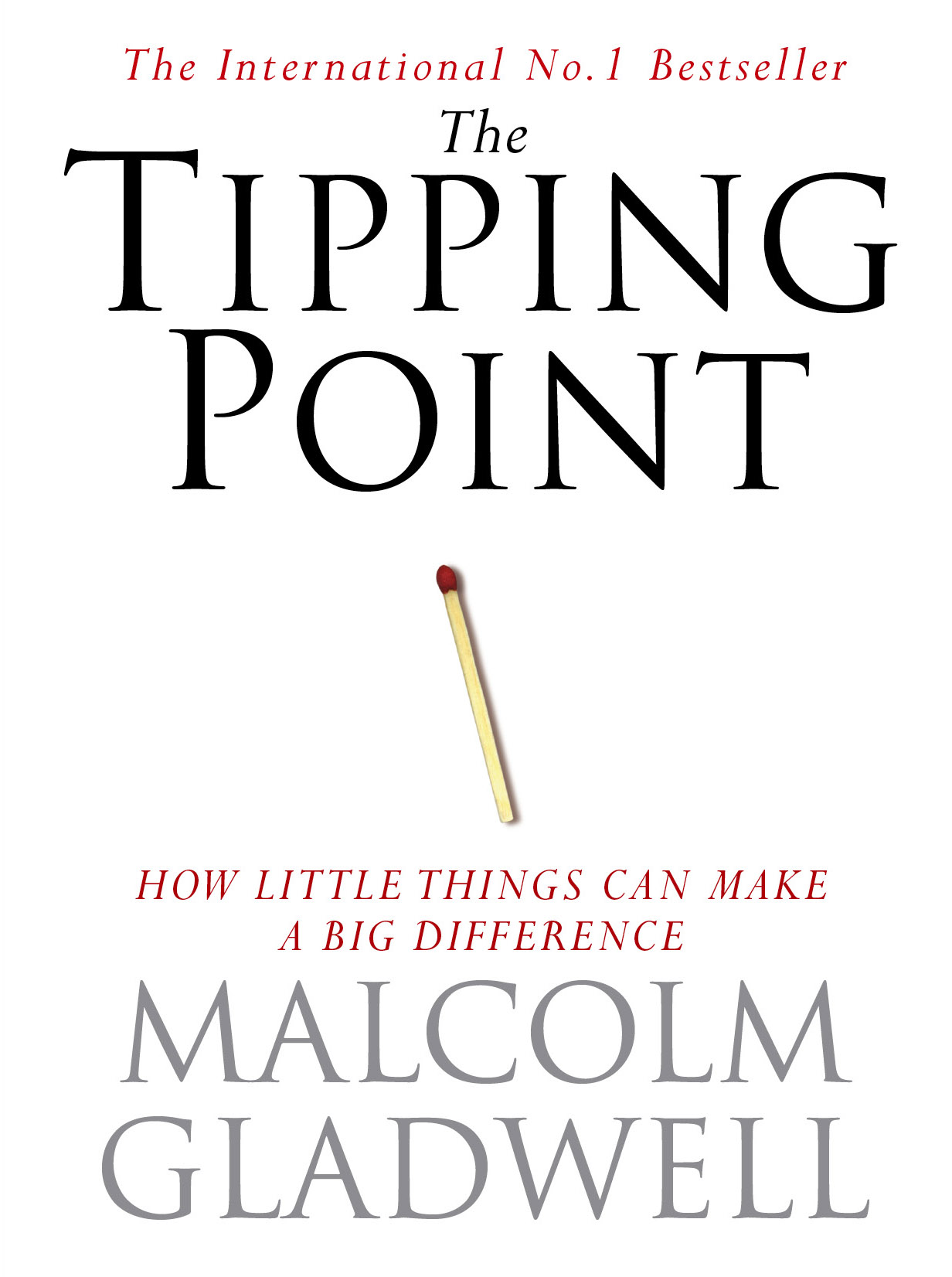Malcolm Gladwell’s “The Tipping Point” intricately dissects the delicate mechanics of social phenomena to reveal a compelling narrative on how ideas, behaviors, and trends spread like wildfire. This book transcends the conventional paradigms of marketing and sociology, promising readers a remarkable shift in perspective that is both intellectually stimulating and practically applicable. Through an analytical lens, let’s delve into the essence of this groundbreaking work, illuminating its core concepts while piquing curiosity about its implications.
The premise of “The Tipping Point” revolves around a thought-provoking thesis: small actions can lead to astonishing outcomes. Gladwell meticulously categorizes societal dynamics into three fundamental principles—The Law of the Few, The Stickiness Factor, and The Power of Context—each playing a pivotal role in determining what ignites a tipping point. This tripartite framework serves as the backbone of his argument, deftly orchestrating an exploration of how insignificant events can culminate in monumental trends.
First and foremost, The Law of the Few posits that a mere handful of individuals wield disproportionate influence in disseminating information. Gladwell introduces the concept of ‘Connectors,’ ‘Mavens,’ and ‘Salespeople,’ each fulfilling a distinct role in the ecosystem of social transformation. Connectors, for instance, are those gregarious characters who thrive in varied social circles. They are the thread woven through the fabric of networks, linking disparate groups and ideas. Their inherent sociability, combined with an expansive repertoire of relationships, allows them to exert significant sway on cultural dynamics.
Next, Mavens serve as the eager gatekeepers of knowledge. They accumulate information not just for self-agrandizement but share their insights diligently with others. By acting as trusted advisors, Mavens amplify the impact of information and often catalyze the decisions of Connectors and general audiences alike. Lastly, Salespeople, with their charisma and persuasive prowess, drive adoption through compelling narratives, entrenching behaviors and ideas deeper into society. Each archetype, while distinctive, synergizes to attain an exponential effect when fostering trends.
Moreover, the Stickiness Factor introduces an intriguing variable—content must resonate deeply for it to stick in the collective consciousness. Gladwell elucidates this with illustrative examples, such as the transformative impact of children’s television programs on educational outcomes. The peculiarities of how information is packaged and delivered possess the capacity to either enrapture or evade audience retention. It’s not merely about what is communicated, but how it is presented that plays a crucial role in establishing relevance, ensuring that messages are not only heard but also felt.
Transitioning into the Power of Context, we uncover the intricate tapestry of environmental conditions shaping behaviors. Gladwell evocatively illustrates how situational factors—ranging from the physical ambiance of a neighborhood to the social zeitgeist—profoundly influence individual decisions. His examination of the broken windows theory exemplifies this concept, where seemingly trivial environmental cues can instigate considerable societal shifts. Therefore, understanding the framework of context empowers strategists and activists alike to engineer environments conducive to positive change.
By weaving together these concepts, Gladwell not only elucidates the mechanisms of social influence but also calls into question the linearity of cause and effect. The Tipping Point beckons readers to broaden their analytical horizons, emphasizing that seemingly inconspicuous variables can catalyze significant societal transformations. This intimate knowledge resides at the heart of effective marketing strategies, public health initiatives, and social movements.
Furthermore, the engaging narratives employed throughout the book serve as illustrative touchstones, rendering complex ideas accessible and relatable. The anecdotes detailing the rise of Hush Puppies shoes or the public health campaign against teen smoking create vivid mental imagery, enabling readers to visualize and internalize the principles at play. This storytelling technique not only captivates attention but also incites a desire to delve deeper into the mechanisms behind each example.
As readers progress through the chapters, an evolving intrigue percolates. The Tipping Point does not simply satiate curiosity; rather, it ignites a fervent questioning of everyday experiences. One might ponder: What elements in our own surroundings influence the choices we make? How are social behaviors molded by the very context in which they unfold? This contemplative journey illuminates our understanding of the world and our place within it.
In conclusion, Malcolm Gladwell’s “The Tipping Point” embarks on a profound exploration of social dynamics that invites readers to reconsider the seemingly mundane aspects of life. Through its remarkable framework, the book converts abstract concepts into actionable insights, bridging the gap between theory and practice. For anyone intrigued by the confluence of human behavior and social change, this tome not only provides an analytical guide but also an engaging, transformative experience that leaves an indelible mark on the intellect and imagination.
The implications of this work resonate beyond academia and entrepreneurship; they permeate our daily lives, urging us to remain vigilant and inquisitive about the forces that shape our society. By understanding the catalysts and influencers within the multiplicity of social systems, readers emerge empowered to effectuate change. “The Tipping Point” is more than a book; it is an invitation to explore the extraordinary potential hidden within ordinary moments, compelling us to stand at the cusp of the next great shift in perspective.
